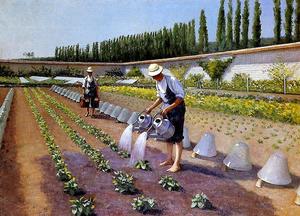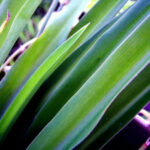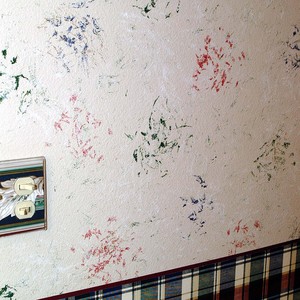Growing hearty vegetables takes more than just fertilization, regular watering and maintenance. Plant diseases in the vegetable garden can attack multiple crops, depending on family the plant originates from. Understanding the common symptoms of these diseases is important for controlling them before they ruin your garden.
Anthracnose Leaf Spot of Beans
Anthracnose infections, caused by a variety of Anthracnose fungus species, affect many plant and tree species. Anthracnose is a major pest of plants in the bean family.
Symptoms
According to the University of Missouri Extension, symptoms of infection consist of lesions along the leaf veins, blackening of veins, leaf wilt, brown spots on the bean pods and masses of visible pink spores. Anthracnose, like many other fungal infections, prefers excess moisture buildup on plants.
Prevention and Control
To prevent the disease it is important to use disease free seeds, rotate crops and clean gardening equipment with a bleach solution for disinfection. According to the University of Missouri, chlorothalonil based fungicides are effective from control Anthracnose infections. Because many species of plants are susceptible to Anthracnose infections, it is important to understand which plants are susceptible and which ones are not when doing a crop rotation.
Black Rot of Cabbage
Black rot is a serious plant disease, caused by bacteria, affects a variety of plants, trees and garden vegetables. Black Rot of cabbage, caused by the bacterium Xanthomonas campestris, can result in complete crop loss, if conditions are favorable.
Symptoms
According to the North Carolina State University Plant Pathology Extension, symptoms of black rot of cabbage consist of yellow to orange “V” shaped areas on leaf margins, blackened veins and stunted growth. A common cause of infection is with infected seeds, which result in patches of infected plants. The bacteria prefer temperatures above 50 degrees F, as well as wet and warm weather conditions. However, the bacteria can survive in soil for years, which can result in continuing infection.
Prevention and Control
According to the North Carolina State University Plant Pathology Extension, copper-based fungicides are effective at reducing disease spread, but can cause black spots on cabbage leaves. Therefore, sanitation and prevention are the most effective methods of control. To prevent infection, use disease free seeds, sanitize gardening equipment and wait for plants to dry before working with them.
Powdery mildew is a disease caused by numerous fungal pathogens that affects nearly every plant, vegetable and tree species. Minor infections are typically not serious, but serious infections can result in defoliation and loss of crops.
Symptoms
Symptoms of a powdery mildew infection consist of white powdery residue on the plants leaves, circular powdery spots and visible white fungal growth. The disease looks similar to dust residue on plant leaves, but differentiates itself by the circular patterns. Defoliation and leaf yellowing are also symptoms of a serious infection, but are uncommon, as the disease typically does not infect until late during the growing season.
Prevention and Control
Powdery mildew control is simple and consists of physically removing the fungal buildup on the leaves. In the case of a serious infection, fungicidal spay can be applied, but is not recommended unless serious damage is occurring due to infection.
Sources:
http://extension.missouri.edu/publications/DisplayPub.aspx?P=g6203
http://utextension.tennessee.edu/publications/Documents/PB1215.pdf
http://www.ces.ncsu.edu/depts/pp/notes/oldnotes/vg16.htm







